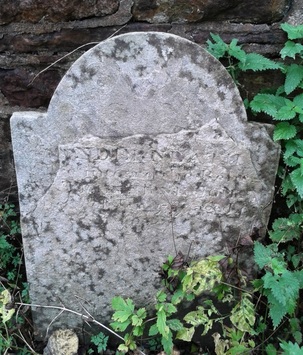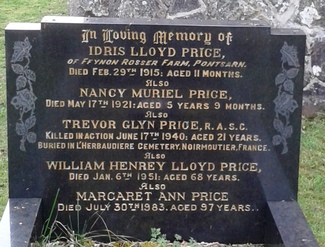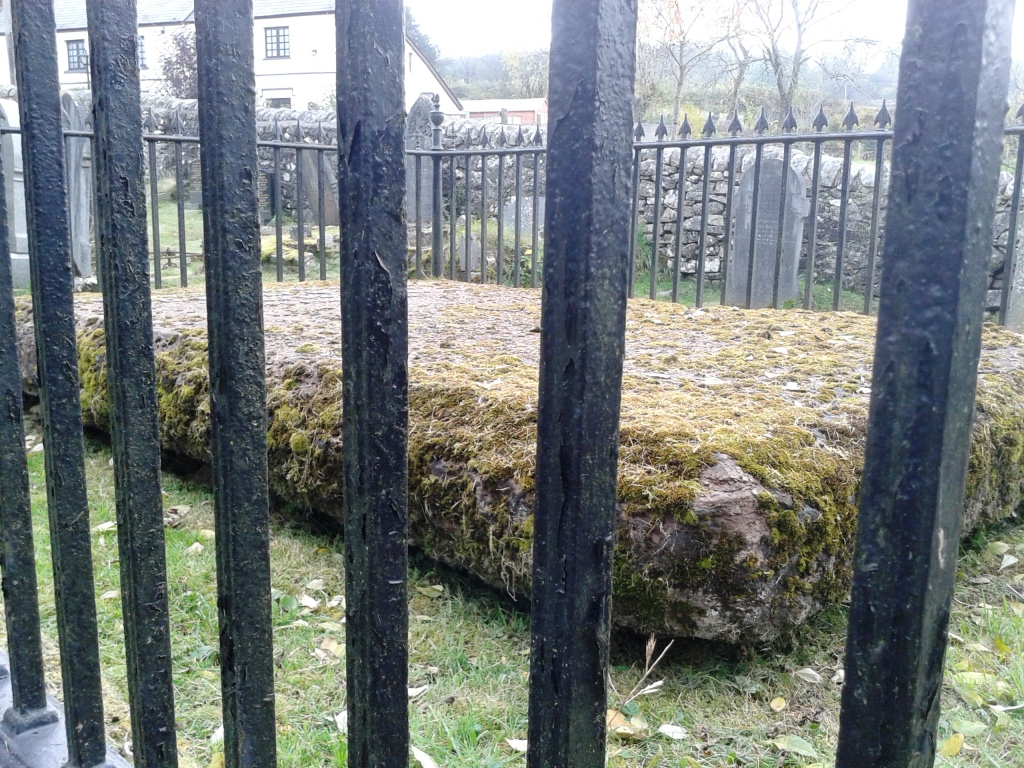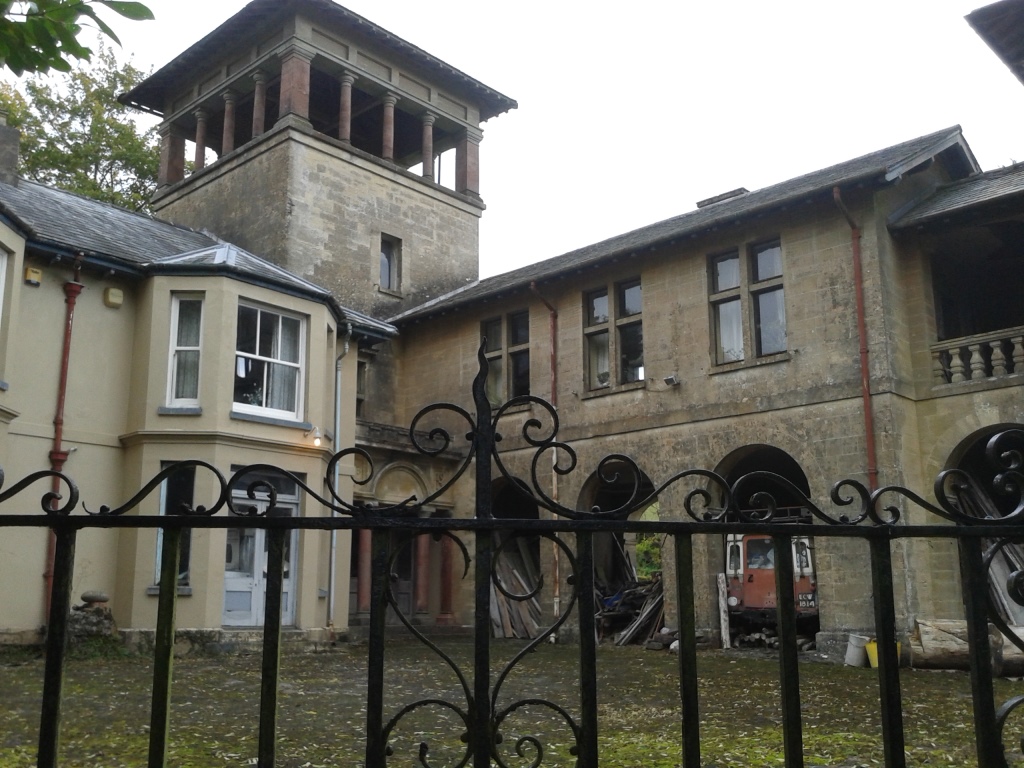 Gravestone in Vaynor Churchyard
Gravestone in Vaynor Churchyard En route we stopped off in Merthyr Tydfil to see Cyfarthfa Castle, and later parked near Vaynor Church, at the southern edge of the Brecon Beacons National Park, to visit the grave of Robert Thompson Crawshay, known as the ‘Iron King’. His grave is covered with a massive stone, which our friends told us weighed seven tons. The lettering ‘God Forgive Me’, often assumed in modern times to be an expression of remorse for his action of closing the Cyfarthfa Works at Merthyr (thus making hundreds destitute), or his own moral shortcomings, was in point of fact not uncommon in Victorian times.
I know I am not alone in finding graveyards fascinating. As the historian George Trevelyan once said: “The dead were and are not. Their place knows them no more and is ours today ... once, on this earth, once, on this familiar spot of ground, walked other men and women, as actual as we are today, thinking their own thoughts, swayed by their own passions, but now all gone, one generation vanishing into another, gone as utterly as we ourselves shall shortly be gone, like ghosts at cockcrow.”

L'Herbaudiere is a hamlet of Noirmoutier-en-L'Ile, a small town on the island of Noirmoutier which is situated off the west coast of France. A causeway gives access to the island.
There are 40 Commonwealth graves from the 1939-45 war commemorated at this site, 22 unidentified. The majority of these forty were aboard the "Lancastria", hit by enemy action on the 17th June 1940 off St. Nazaire. All told about 4,000 men, women and children lost their lives when the ship sank 20 minutes after it was bombed by the Germans near the French port of Saint-Nazaire on 17 June 1940 , fewer than 2,500 surviving. The Lancastria was the largest loss of life from a single engagement for the British forces during World War Two and also the largest loss of life in British maritime history - greater than the Titanic and Lusitania combined. It occurred just a few weeks after the evacuation of the British Expeditionary Force (BEF) from Dunkirk, when the Lancastria had been sent to help bring home some of the estimated 150,000 British servicemen still in occupied Europe.
Following the sinking of the Lancastria, Prime Minister Winston Churchill imposed a media blackout, as the government feared the news would be a terrible blow to British morale. American newspapers finally broke the story at the end of July. I wonder how long it was before William and Margaret Price received the news of their son’s death? And whether they were ever able to visit his grave on that small island?
For visitors to the Vaynor area, a remarkable sight locally is the ‘Spanish House’ - a now dilapidated but once stunning Italianate villa, built I understand by a local solicitor and amateur astronomer in 1912 for his Italian wife. Our friend had been inside the house as a child, and recalled the beautiful Majolica tiles, the araucaria tree in its courtyard and an eagle statue. Local legend has it that after only about six months, the lady had had enough of Welsh weather, and returned to Italy, never to be seen again!
Links:
Lancastria sinking:
www.bbc.co.uk/news/uk-scotland-33092351
www.bbc.co.uk/history/ww2peopleswar/stories/56/a4103056.shtml
www.bbc.co.uk/history/ww2peopleswar/stories/72/a2334872.shtml
Taf Fechan Valley
welshwildlife.org/nature-reserve/taf-fechan-merthyr-tydfil/



 RSS Feed
RSS Feed
